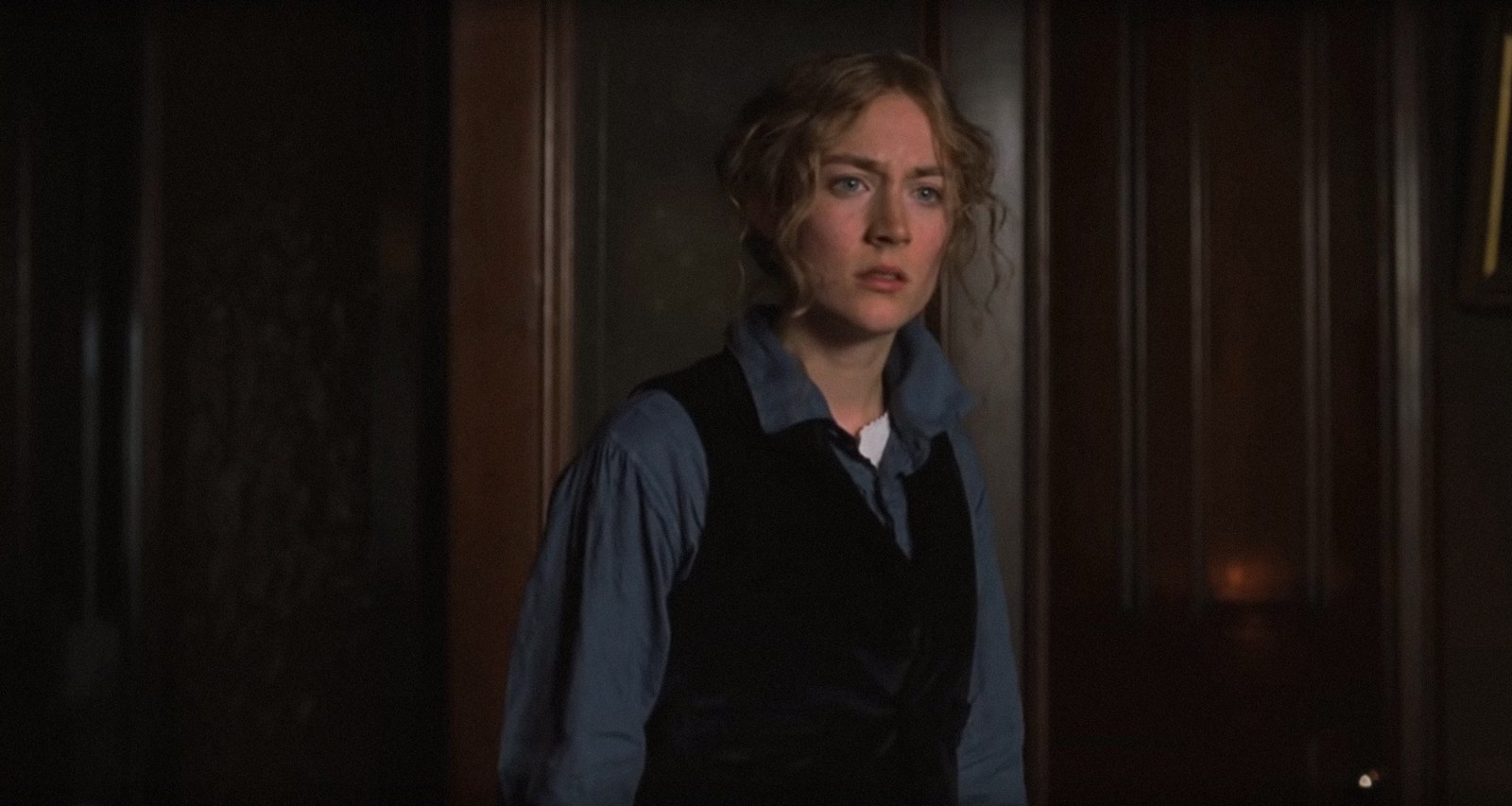Greta Gerwig’s 2019 film adaptation of the classic novel Little Women arrived at this year’s Oscars with six nominations, and disappointingly left with only one Academy Award win. While it would have been completely justified and well-deserved for Florence Pugh and Saoirse Ronan to win Awards for their portrayals of Amy and Jo, the film’s costume designer, Jacqueline Durran, took home an Oscar for Best Costume Design instead.

It cannot be said that Jacqueline Durran is an untalented costume designer; her work on the 2005 adaptation of Pride and Prejudice and Joe Wright’s 2007 film Atonement definitely did a lot to contribute to the effect and execution of the two films. However, to claim that she deserves an Academy Award for costume design while Rocketman’s Julian Day wasn’t even nominated for his exquisite work in 2019, is unwarranted and baseless.
The biggest issue with Durran’s work on Little Women is one that should have taken her out of the running for Best Costume Design very early on in the nomination process: complete inconsistency with the time period. From the inaccurate silhouettes and completely out of place colour schemes to the lack of crucial elements and accessories, such as bonnets, an objective look at the fashion of Little Women places it in an ambiguous and stylistically messy time period that has never truly existed.

Beginning with the materials used on the costumes, it can immediately be noted that they are extremely inconsistent with the historical context Little Women takes place in. From the use of lace for the costumes made to dress a working class family that could not afford it and the consistent utilisation of cotton that was not readily available at the time, to the messy, unwarranted use of brighter and pastel colours, there is no shortage of historical inaccuracies to criticise in the costuming of this film. There is an overwhelming amount of frames that show the four sisters wearing outfits featuring pastel shades that would not have been available at the time, and while there is always room for creative freedom when it comes to such aspects of costuming, there should also be a line drawn when this freedom is exploited for the sake of an inaccurate aesthetic.
Much like elements that were misplaced or misrepresented, there is a lot to be said about things that simply weren’t included. The most prominent instance of this is the complete lack of bonnets, a crucial accessory for the 19th century working class woman, throughout the entire film, but this is by no means the only element Durran has excluded from her work. Buttons on the front of daywear, the 1800s staple hairstyle of sausage curls, hoop skirts and big, puffy sleeves are all elements that are nowhere to be found in this film. If this were a creative choice that somehow contributed to the film, it wouldn’t be brought into question; however, it isn’t, and it arguably takes away from the visual representation of the character development the girls undergo.
Had the costuming been historically accurate, the flashbacks would feature the girls in shorter bodices and fuller skirts, adorned with bonnets and presenting an air of innocence and childishness that came with the Civil War women’s fashion. The post-war shots would include more fitted gowns with fitted sleeves and a fuller back, as well as smaller hats used to accessorise. This vast difference in the during and post-war fashion could have been used to the film’s advantage, using historically accurate costuming in order to highlight the coming of age story taking place. However, the opportunity was sadly missed.

Aside from these historical errors reflected in the costuming, there is also a significant discrepancy between the costumes and various elements of Louisa May Alcott’s original story. It would be very unlikely for the financial and social status of the March family to allow for an outfit change for all four sisters in every scene. While no one expects the costumes for a multimillion dollar film to be reduced to two per character, a rarer rotation would do the film no harm, and neither would the use of the same costume by more than one sister, as hand-me-downs would have likely been a common occurrence in a financially struggling, working-class family.
These mistakes aren’t limited to daily wear, however: when Meg attends a ball that, in the novel, results in her being severely scrutinised by the other attendees for the way she dresses and behaves, her costuming in Gerwig’s adaptation does nothing to reflect the situation. The latter half of the 1800s saw v-neck, off the shoulder gowns come into fashion, which is why it makes little sense for Emma Watson to wear an on the shoulder gown with a square neckline that covers more than the gowns of the other attendees. Much like the rest of the costuming in this film, dressing Meg’s character in such a way for a scene which aims to portray her in a scandalous light is hideously misplaced.

Ultimately, although Jacqueline Durran is by no means bad at what she does, her work on Little Women was a colossal underperformance for what she is capable of. To say that Durran was deserving of the Oscar this year while Mayes C. Rubeo was snubbed for her work on Jojo Rabbit and Julian Day didn’t even receive a nomination for Rocketman, is an uneducated claim, and likely one of the many reasons people question the validity of the Academy Awards more and more each year. So, although Little Women was great on Gerwig’s part, one could say that the costume work on this rendition was deserving of as many Oscars as we saw bonnets in the film: none at all.
Sara Fabek Zovko

